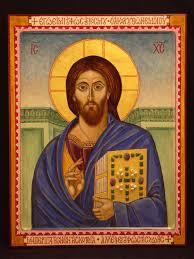A Most Consuming Topic
On my early trips to Romania, I was captivated by the beauty and otherness of the Orthodox churches I visited. For a protestant, the mosaics, icons, candles and abundance of gold were all breathtaking and totally foreign to me. I found that one could purchase official icons in a number of stores throughout Romania. A Romanian friend, a devote Baptist believer who was serving as a translator for our team, seemed a little annoyed at my fascination for the Orthodox churches. She became even more annoyed when I asked her to help me buy an icon before I returned home. Reluctantly she went with me to me to purchase a beautiful triptych, all the time mumbling her disapproval for this my purchase. I was thrilled to take home this beautiful piece of art, not realizing then that I was part of the commodification of religion that is the central theme of Being Consumed: Economics and Christian Desire by William T. Cavanaugh and Consuming Religion: Christian Faith an Practice in a Consumer Culture by Vincent J. Miller. My sole interest in the icon was a memento of Romania, a souvenir that served no greater purpose than a nice decoration. For my Romanian friend, this symbol had deep historical roots (though as a protestant, it was negative in nature) and personal meaning that reflected her deeply held religious values and those of her religious community. For Orthodox believers, these icons had even great positive meaning that spoke powerfully to them as individuals and as part of their worshiping community. For me, the icon was a mere decoration shorn completely of any religious context. Herein lies the issue of consuming religion: “Like souvenirs brought home from distant lands, the religion of the past is excised from its cultural political context and used to decorate the everyday life of our time.”[i]
Both of these books are really about disconnection as a result of our consumer culture. Through a serious events, what is consumed has been separated from its history, its source, its meaning and its original purpose. This, according to Miller, is the result of the fragmentation through such developments as Fordism, mass production and the single family home that created a greater a distance between the worker and the products produced, the origins of products that show up on store shelves, and the traditions and support structures within extended families. What ultimately has happened is that marketers have succeeded in getting us to view products in and of themselves. In the past, the value of items came from its usefulness and purpose in a given context; now the value was in the commodity itself. Cavanaugh suggests that this has developed into “a detachment from things we buy. Our attachment to things we buy is short-lived”[ii] which leaves the consumer desiring not necessarily more, but something else. “Because of these types of desire are never satisfied, marketers have us just where they want us—chained to consuming in pursuit of happiness or our ideal identity.”[iii]
Both authors suggest that this same fragmentation has also occurred in modern religion. Today, people prefer a generalized, non-specific religion, which is made possible because —like modern stuff — religion is no longer seen as a coherent whole, nor tied to any human community where it finds its meaning and practices. “The fruit of abstraction and commodification is a loss of religion’s power to be a sources of personal and social transformation. The rich mosaic of religion’s origins, history, and meaning developed by practitioners throughout the centuries is erased—the community of faith is dissected and no longer able to draw, compel, or influence daily behavior.”[iv]
Bottom line, Christianity has been cut-off from its contextual home. For Miller, what is needed is the greater involvement of the laity in religious beliefs and practices, allowing for their deeper involvement in creating liturgical and worship space. It also involves bringing the fragments of religion back to their context, where a strong connection can be made between symbols, doctrines, and practices within historically based communities. For Cavanaugh, it is a renewed focus on the Eucharistic community that can answer modern consumerism. He states: “In the Eucharist, Christ is gift, giver, and recipient. We are neither merely active or passive, but we participate in the divine life so that we are fed and simultaneously become food for others.”[v] By retrieving historical faith in its original context and living out faith within a coherent worshiping community, we will create space for reconnecting a fragmented people and society.
The reinvestment of context and meaning in Christian symbols and practice might be similar to my icon experience. In the recent years, I’ve come to understand the deeper meaning of icons, their rich history and the strong Orthodox theology behind the practices. I can now see in the eyes and attitudes of these pictured saints and of Christ himself the message of the incarnation, the passion and forgiveness of God, love and salvation. These are objects that inform the deepest worship of a larger community. They are objects that indeed “draw, compel and influence daily behavior.”[vi] Today, I would never purchase an icon as a mere decoration, because I can no longer separate an icon’s deeply religious significance from that of a mere object for decoration. Plus, there are plenty of other cool things I can buy as mementos of my time in Romania.

Brasov, Romania: Souvenir Stand (taken by John Woodward, 2011)
[i] Vincent J. Miller, Consuming Religion: Christian Faith and Practice in a Consumer Culture (New York: Bloomsbury Academic, 2003), 81.
[ii] William T. Cavanaugh, Being Consumed: Economics and Christian Desire (Grand Rapids, MI: Eerdmans Publishing Co., 2008), 35.
[iii] Dreyer, Elizabeth, “How to Remain Faithful in a Consuming Culture and is New Age Spirituality All That New?” Religious Studies Review 34, no. 1 (March 1, 2008): 1-8, accessed February 21, 2014, ATLA Religion Database with ATLASerials, EBSCOhost, 2.
[iv] Ibid.
[v] Cavanaugh, 97.
[vi] Dreyer, 2.

Leave a Reply
You must be logged in to post a comment.